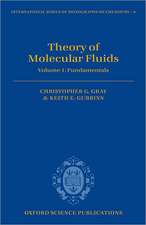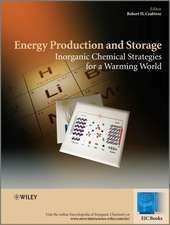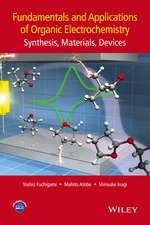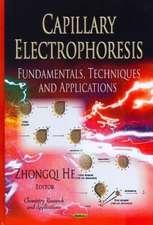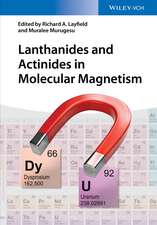Bioelectrochemistry of Biomacromolecules: Bioelectrochemistry: Principles and Practice, cartea 5
Editat de Giorgio Lenaz, Giulio Milazzoen Limba Engleză Hardback – aug 1996
| Toate formatele și edițiile | Preț | Express |
|---|---|---|
| Paperback (1) | 949.55 lei 6-8 săpt. | |
| Birkhäuser Basel – 11 noi 2011 | 949.55 lei 6-8 săpt. | |
| Hardback (1) | 955.70 lei 6-8 săpt. | |
| Birkhäuser Basel – aug 1996 | 955.70 lei 6-8 săpt. |
Preț: 955.70 lei
Preț vechi: 1165.49 lei
-18% Nou
Puncte Express: 1434
Preț estimativ în valută:
182.89€ • 187.30$ • 152.14£
182.89€ • 187.30$ • 152.14£
Carte tipărită la comandă
Livrare economică 19 martie-02 aprilie
Preluare comenzi: 021 569.72.76
Specificații
ISBN-13: 9783764352967
ISBN-10: 3764352965
Pagini: 390
Ilustrații: XI, 387 p.
Dimensiuni: 155 x 235 x 27 mm
Greutate: 0.74 kg
Ediția:1997
Editura: Birkhäuser Basel
Colecția Birkhäuser
Seria Bioelectrochemistry: Principles and Practice
Locul publicării:Basel, Switzerland
ISBN-10: 3764352965
Pagini: 390
Ilustrații: XI, 387 p.
Dimensiuni: 155 x 235 x 27 mm
Greutate: 0.74 kg
Ediția:1997
Editura: Birkhäuser Basel
Colecția Birkhäuser
Seria Bioelectrochemistry: Principles and Practice
Locul publicării:Basel, Switzerland
Public țintă
ResearchCuprins
1. Structure, chemical reactivity and electromagnetic properties of nucleic acids.- Nucleic acid structure.- Chemical reactivity of nucleic acids.- Electric and magnetic properties of nucleic acids.- 2. Proteins: Structure, folding and function.- Protein structure.- Inverse temperature transitions (cold denaturation) in polypeptides and proteins.- Changing the temperature, Tt, of the inverse temperature transition for folding and assembly.- Development of a macroscopic assay system for observing the folding and assembly transition and its equivalent of energy conversion.- The ?Tt-mechanism for energy conversion in polypeptides and proteins.- The ?Tt hydrophobic paradigm for protein folding and function.- Concluding comment.- 3. Electrochemistry of redox proteins.- Protein electrochemistry.- The nature of the electrode surface.- STM and AFM of electrode surfaces.- The microscopic model.- Protein—protein complexes.- Direct enzyme electrochemistry.- Biosensors.- Conclusions.- 4. Applications of voltammetric methods for probing the chemistry of redox proteins.- Voltammetric methods for studying redox proteins.- Applications to studies of redox-active sites in proteins.- Concluding remarks.- 5. Thiol/disulfide exchange and redox potentials of proteins.- Equilibrium behavior of thiols/disulfides in a redox barrier.- Measuring thiol/disulfide oxidation potentials.- Studies with small molecules.- Factors affecting protein thiol/disulfide oxidation potentials.- Thiol/disulfide interconversions during enzyme catalysis.- Thiol/disulfides as redox carriers.- Role of oxidation potential of a dithiol in protein folding.- Proteins in which a disulfide bond stabilizes structure.- Redox active thiol/disulfides which affect activity.- Catalysis of thiol/disulfide exchange.-Conclusions.- 6. Electrochemistry of iron-sulfur proteins.- to iron-sulfur proteins.- Electrochemical techniques.- Voltammetric studies of iron-sulfur proteins.- Conclusions.- 7. Glycosaminoglycans: Sulphated polysaccharides of the cell surface and extracellular matrix.- Glycosaminoglycan biosynthesis.- Glycosaminoglycan interactions.- Glycosaminoglycan sequencing.- Clinical application of glycosaminoglycans.







